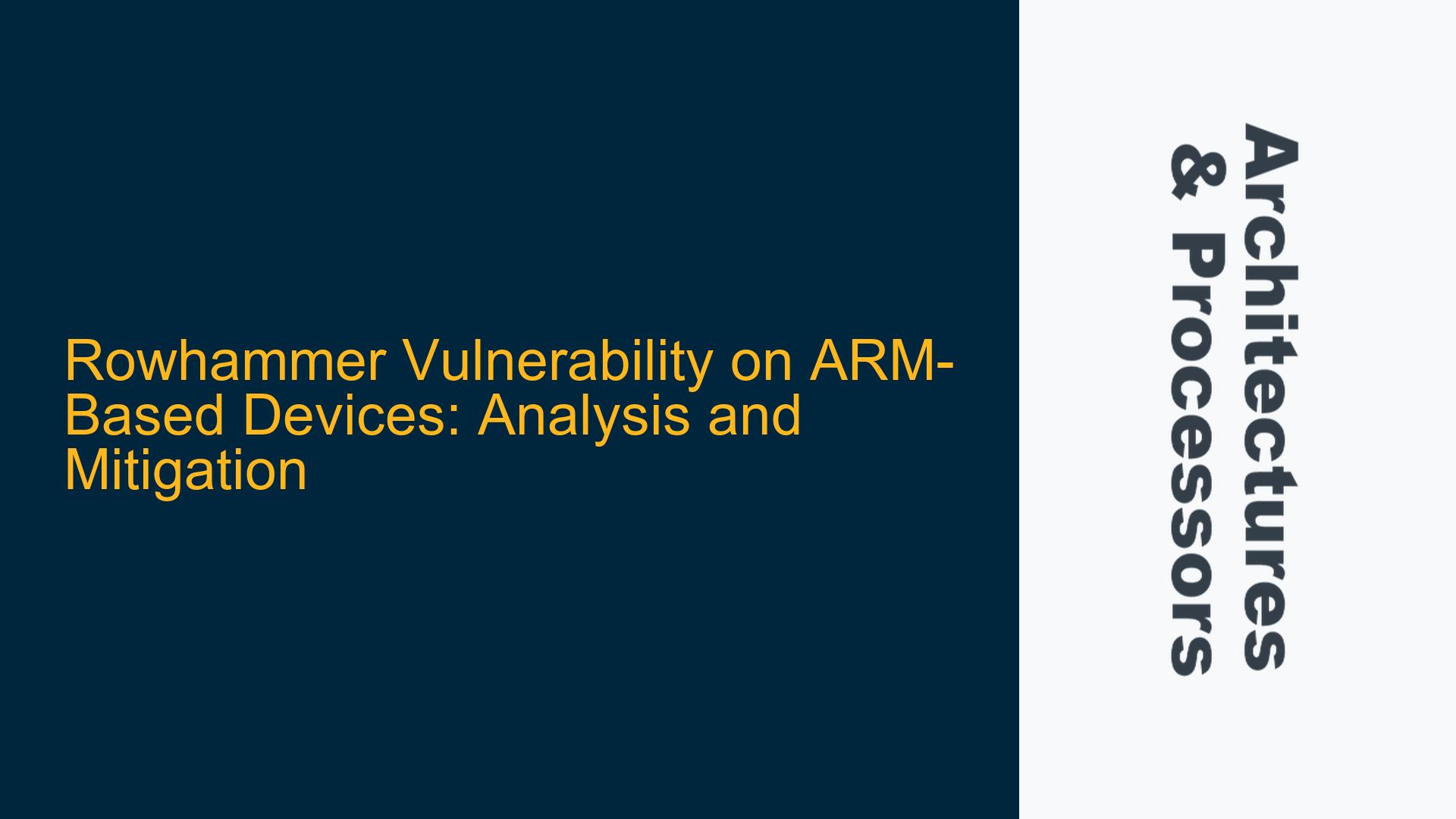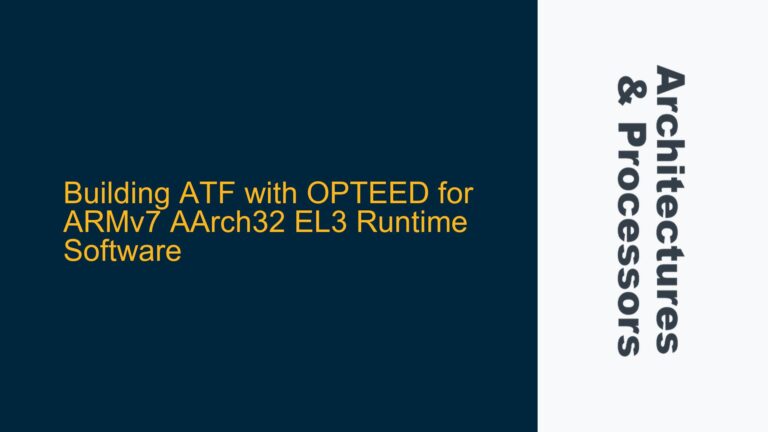ARM Cortex-A Series DDR Memory Vulnerability to Rowhammer Attacks
The Rowhammer vulnerability is a significant security concern in modern computing systems, particularly those utilizing DDR memory. This issue arises due to the high-density nature of modern DRAM cells, where repeated access to a specific row of memory can cause bit flips in adjacent rows. On ARM-based devices, particularly those using Cortex-A series processors, this vulnerability can be exploited through various means, including malicious WebGL programs leveraging high-precision timers and GPU cache architecture.
The Rowhammer effect is a result of the physical properties of DRAM cells. As memory densities increase, the distance between adjacent cells decreases, making them more susceptible to electrical interference. When a specific row is accessed repeatedly, the electrical charge can leak into neighboring rows, causing bit flips. This can lead to unauthorized memory access, privilege escalation, and other security breaches.
In ARM-based systems, the Cortex-A series processors are particularly vulnerable due to their widespread use in mobile and embedded devices, which often have limited memory protection mechanisms compared to traditional desktop systems. The combination of high-density DDR memory and the high-performance requirements of these devices creates an environment where Rowhammer attacks can be particularly effective.
WebGL-Based Rowhammer Exploitation and GPU Cache Architecture
The exploitation of the Rowhammer vulnerability on ARM-based devices often involves the use of WebGL, a JavaScript API for rendering interactive 3D graphics within web browsers. WebGL provides high-precision timers, which can be used to orchestrate precise memory access patterns necessary for a successful Rowhammer attack. Additionally, the GPU cache architecture plays a crucial role in facilitating these attacks.
WebGL allows malicious programs to execute on the GPU, bypassing many of the traditional CPU-based security mechanisms. By leveraging the high-precision timers available in WebGL, an attacker can precisely control the timing of memory accesses, increasing the likelihood of inducing bit flips in adjacent memory rows. This is particularly effective on ARM-based devices, where the GPU and CPU share the same memory space, allowing the GPU to directly influence the CPU’s memory.
The GPU cache architecture further exacerbates the issue. Modern GPUs, including those in ARM-based systems, utilize complex caching mechanisms to optimize performance. However, these caches can be manipulated to increase the frequency of memory accesses to specific rows, thereby increasing the likelihood of Rowhammer-induced bit flips. The combination of high-precision timers and GPU cache manipulation creates a potent attack vector that can be difficult to mitigate.
Mitigating Rowhammer Attacks on ARM-Based Devices
Mitigating Rowhammer attacks on ARM-based devices requires a multi-faceted approach that addresses both the hardware and software aspects of the vulnerability. One of the most effective hardware-based mitigations is the implementation of Target Row Refresh (TRR) in DDR memory controllers. TRR works by periodically refreshing rows that are likely to be affected by Rowhammer-induced bit flips, thereby preventing unauthorized memory access.
In addition to hardware mitigations, software-based solutions are also crucial. Reducing the precision of timers available to WebGL can significantly reduce the effectiveness of Rowhammer attacks. By introducing timer dithering or reducing the resolution of timers, the ability of an attacker to precisely control memory access patterns is diminished. This can be implemented at the browser level, where WebGL is executed.
Another important software mitigation is the use of memory isolation techniques. By isolating critical memory regions from potentially malicious processes, the impact of Rowhammer-induced bit flips can be minimized. This can be achieved through the use of memory protection units (MPUs) or memory management units (MMUs) in ARM-based systems. These units can be configured to restrict access to sensitive memory regions, thereby reducing the risk of unauthorized access.
Furthermore, ARM has been working closely with the ecosystem to develop robust mitigations for Rowhammer attacks. This includes the development of secure boot mechanisms, which ensure that only trusted software is executed on the device. Additionally, ARM has been actively involved in the development of secure firmware updates, which can be used to patch vulnerabilities as they are discovered.
In conclusion, the Rowhammer vulnerability poses a significant threat to ARM-based devices, particularly those utilizing DDR memory. However, through a combination of hardware and software mitigations, the risk of exploitation can be significantly reduced. By implementing Target Row Refresh, reducing timer precision, and utilizing memory isolation techniques, ARM-based devices can be made more secure against Rowhammer attacks. ARM’s ongoing collaboration with the ecosystem ensures that these mitigations continue to evolve, providing robust protection against this and other emerging threats.






